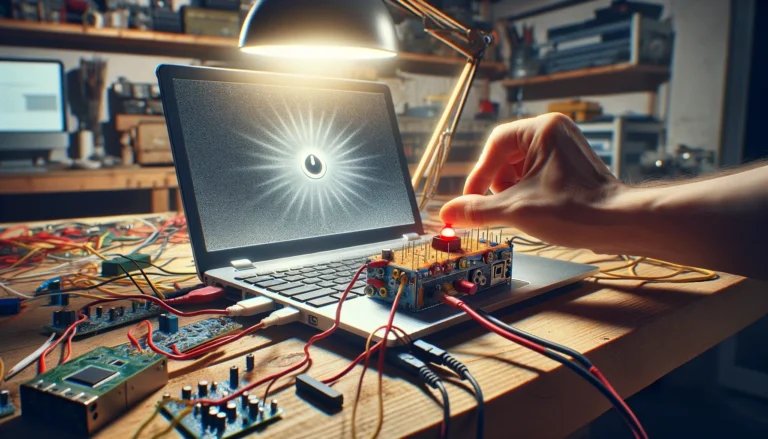When a computer refuses to charge, it can lead to frustration and decreased productivity. This comprehensive guide delves into the myriad reasons behind charging issues and offers a step-by-step approach to diagnose and fix these problems. From checking the basics like power sources and cables to more complex troubleshooting involving hardware inspections, we’ll cover all the bases to help you get your computer back to its optimal charging capacity.
Introduction
A computer that won’t charge can be symptomatic of various underlying issues, ranging from the easily fixable, such as a loose cable connection, to more severe problems like internal hardware failure. Understanding the root cause is essential for an effective fix. This guide is designed to walk you through a thorough troubleshooting process, ensuring that no stone is left unturned in restoring your computer’s charging capabilities.
Key Takeaways:
- Comprehensive Inspection: Begin with external components before moving to internal diagnostics.
- Systematic Approach: Follow a step-by-step troubleshooting guide to avoid overlooking potential issues.
- Preventive Measures: Learn how to maintain your computer’s charging system to prevent future issues.
In This Content
ToggleInspecting the Power Source
Checking the Outlet and Power Strip
- Functionality Test: Use another device to confirm the outlet’s functionality.
- Surge Protector Check: Ensure that any surge protectors or power strips are in good working condition and not causing the issue.
Analyzing the Charger and Cable
- Physical Examination: Look for signs of wear or damage to the cable and charger that might prevent proper charging.
- Compatibility Test: Try using a different, but compatible, charger to rule out issues with the original charger.
Evaluating the Battery’s Health
Battery Status and Performance
- Diagnostic Tools: Utilize built-in or third-party software tools to check the battery’s health and performance metrics.
- Wear and Tear: Understand the impact of aging on battery performance and recognize when replacement is necessary.
Considerations for Battery Replacement
- Replacement Indicators: Learn to identify the clear signs that indicate a battery needs replacement, such as swelling or a significant decrease in charge capacity.
- Choosing the Right Battery: Ensure that any replacement battery is compatible and meets the manufacturer’s specifications.
Updating System and Drivers
The Role of Software in Charging
- Operating System Updates: Stay informed about the latest updates to your operating system, which may include critical fixes for charging and power management issues.
- Driver Updates: Regularly update your computer’s chipset and battery drivers, which play a crucial role in the charging process.
Adjusting Power Management Settings
Understanding Power Settings
- Default Configuration: Learn how to reset your computer’s power settings to default to solve charging issues caused by incorrect settings.
- Advanced Settings Exploration: Dive into advanced power settings that can influence charging, such as disabling USB selective suspend.
Considering Hardware Issues
Inspecting the Charging Port
- Damage Assessment: Conduct a thorough examination of the charging port for damage or obstructions that could prevent a secure connection.
- Professional Assistance: If the charging port appears damaged or the issue persists, seeking professional help is advisable.
Investigating Internal Components
- Motherboard and Component Diagnostics: Understand that issues with the motherboard or other internal components can lead to charging problems, requiring professional assessment and repair.
- Signs of Hardware Failure: Be aware of additional symptoms that might indicate broader hardware issues, such as the computer failing to power on.
Conclusion
Addressing a computer’s charging issues often involves a blend of simple checks and more in-depth troubleshooting. By methodically working through potential problem areas, from external components like chargers and cables to internal factors such as the battery and motherboard, you can identify and rectify the cause of charging difficulties. Regular maintenance and awareness of your computer’s hardware and software can help prevent future charging issues.
FAQ
How long should I try charging my computer before concluding there’s an issue?
If your computer shows no signs of charging within 30 minutes to an hour, there might be an underlying issue worth investigating.
Can extreme temperatures affect my computer’s ability to charge?
Yes, exposing your computer to very high or low temperatures can affect battery performance and its ability to charge. It’s best to operate and charge your computer in manufacturer-recommended temperature ranges.
What are the risks of using an unofficial or third-party charger for my computer?
Using an unofficial charger can pose risks such as damaging your battery or computer due to incompatible voltage or amperage. It’s safest to use chargers provided by or officially recommended by the manufacturer.
How can I maintain my computer’s battery health?
Maintain your battery’s health by avoiding extreme discharging and charging cycles, keeping your computer cool, and not leaving it plugged in at all times when fully charged.
What should I do if my computer starts charging intermittently?
Intermittent charging can indicate issues with the charger, charging port, or battery. Start by inspecting the charger and port for physical issues and consider resetting your computer’s power management settings. If the problem persists, professional diagnostic services may be necessary.
- Is It OK to Clean Laptop Keyboard With Wet Wipes? - March 19, 2024
- How Long Does it Take For a Completely Dead Laptop to Charge? - March 18, 2024
- How Do You Fix a Computer That Won’t Turn on But Has Power? - March 18, 2024






